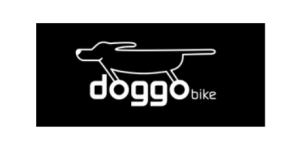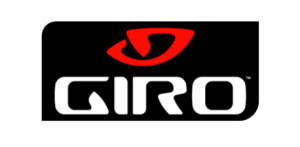For most people, choosing a mountain e-bike can be stressful and at the same time, awkward. The confusing display of terminology and technology, not to mention the varieties of bike types available, can be mind-boggling. Nonetheless, your financial budget is the most crucial factor in choosing the best electric mountain bike. In getting a good mountain e-bike, there are many factors to be put into consideration. This guide will show you how to choose the best mountain e-bike, but first, we will discuss some facts about a mountain e-bike.
Related article: How To Choose An Electric Bike? A Complete Buying Guide
What is a Mountain E-bike?
A mountain e-bike is a bicycle with electrical motor assistance designed to aid mountain riding. Just like other types of mountain bikes, mountain e-bikes have front-fork suspension. It also consists of center-drive, mid-drive, motors; all in a power pack.
Older mountain e-bikes were outfitted with big and bulky hub motors; this is no more applicable. The mid-drive motor is lighter, improves balance, and also lowers your center of gravity. This improves your balance.
A reasonable amount of mountain e-bikes comes with a battery pack of about 420(Wh) and 38 volts. A mountain e-bike can swiftly switch from using electric motor assistance to regular biking. Also, most electric mountain bikes have the same components as the regular mountain bikes. In some models, once the motor is at full power assistance, the bike provides support of up to a 3-fold power increment.
Mountain E-bike Motor Systems
In choosing the best electric mountain bike, you have to understand the various motor systems. This will help you decide the one that matches your style of riding. Also, you need to understand the different classes and types of mountain e-bikes. Follow this article, and we will put you through each step accordingly.
Mid-drive and Hub Motor system
The electric bike consists of two (2) different types of motor systems. These two (2) types differ with various parts, but the most common factor is the size and weight. The hub motors are the first and oldest type of motor system common with electric bikes. They are heavy and often cause weight imbalance for the riders. Mid-drive motor systems are light-weight, the best and safest type of motor system for mountain riding.
Hub motors are not advisable for electric mountain bikes. This is due to the imbalanced load distribution at the rear-end of the e-bike. In addition, hub motors are famous for overheating during or after a long mountain climb.
Related article: How an Electric Bike Works?
Classification of mountain e-bikes
Mountain e-bikes are classified into three (3) different classes based on their power and range. They are;
Class 1
They are the most common class of mountain e-bikes. They require pedalling to trigger the motor regardless of the type of motor system. You are likely to search online for class 1 mountain e-bike types because they are the most common. Class 1 type bikes are also known as pedalec e-bikes.
Class 2
This type of e-bikes uses the throttle and can exceed 780 watts. Their maximum speed is 20 mph. They also have a hub motor system. Class 2 electric bikes are banned from most trails (due to the power output which causes throttle overheating).
Class 3
These are electric bikes that provide motor assistance up to 27 mph. These types of e-bikes are not common and are banned from use on class 1 trails. They are mostly used by commuters who ride rough terrain or rocky paths.
Do You Prefer a Cadence Sensor or Torque Sensor?
The pedal-assist mountain e-bikes vary with the amount of power they provide during pedalling. So, when you are riding fast, they offer more power, unlike when you’re riding slowly. Pedal-assist e-bikes calculate the amount of power to provide for you by using a sensor. This sensor can either be a cadence or a torque sensor.
Cadence sensors
They are cheap but less effective. They are very effective when you’re maintaining the same speed. Also, they release a large amount of power during a change in speed.
Torque sensors
They are most common with higher-end mountain e-bikes. They are more effective. They often give a more accurate and precise torque measurement. Also, torque sensors allow you as the rider to take overall control on the motor power.
Related article: Tips for Electric Bike Beginner
Front vs. Dual Suspension
Mountain e-bikes can either have dual (at the front and the rear) suspension or front suspension. A mountain e-bike with a dual suspension will help you to move over a rocky path and bumps without much discomfort.
Using a bike with front suspension will also reduce the bumpy effect of rocky paths and bumps. Although, an electric mountain bike with front suspension won’t do you much good when the rear-end climbs over bumps. This can make your ride a little bumpy and uncomfortable.
It should be noted that a mountain e-bike with front suspension is less costly and can help you ride faster with less weight. Unless you aim to cycle more quickly, the dual suspension is better. A dual suspension mountain e-bike is capable of giving you smoother riding experience.
The Mountain E-bikes’ Brakes
To choose the best mountain e-bike, brakes are an essential component. Most electric mountain bikes come with a hydraulic brake which consists of 180mm disc rotors. Some brakes have a double piston, but we’ll recommend 4-piston calliper brakes (203mm rotors) for better stopping power.
The Motor System Power
A mountain e-bike’s effectiveness is basically due to the type of motor system it uses. This is a concept you have to learn to know how to choose the best mountain bike in Toronto.
With a more powerful motor system, your mountain e-bike is capable of riding on any trail at full speed. Also, you should note that a powerful motor system will lower your mountain e-bike’s range.
Mountain e-bike motors have a maximum size limit. This limit varies depending on your location. In the United States, for example, the motor system maximum limit is about 500 watts on average. This figure is the same for Toronto.
In considering the best mountain e-bike to purchase, think about your plans with the bike and consider the motor size. If you plan to climb hills, cycle swiftly, and don’t plan on going far, purchase the one with more power.
Also, electric mountain bikes have a speed limit. The speed limit varies based on the regulations in your locale.
Do you want a Pedal Assist, Throttle or Hybrid?
An electric mountain bike can either be a throttle-assist type or the pedal-assist type. The pedal-assist mountain e-bikes are the type where the motors work only while you are pedalling. Whereas, the throttle-assist type are the ones where the motors work immediately you push the throttle.
Also, throttle-assist types drain your battery very fast and are not beneficial to your fitness levels. With a throttle-assist e-bike, ascending difficult areas can be easy, but you may have some restrictions.
The pedal-assist electric mountain bikes are beneficial when you want to workout, build fitness, and also move around quickly. The adjustment level is also useful, and you can switch from low to high and back again. Pedal assist is ideal because it allows you to control the assistance level, which can help reduce battery consumption.
If you are finding it hard to choose which one to purchase, you can settle for the hybrid. It has both throttle and pedal assist options. Most people prefer the hybrid to others because it gives extra assistance via throttle and more range with pedal assistance.
How do you want Your Mountain E-bike to look like (Carbon frame or Aluminium frame)?
Your financial budget is the main determining factor in how beautiful your e-bike will look. Most electric mountain bikes with carbon frames are more expensive than aluminum models. A good mountain e-bike with a carbon frame can save up to 600g in weight and are stiffer. Also, carbon gives a sleeker design to the bikes and allows manufacturers to test different varieties of shining effect.
An aluminum frame does not give chance for much variety of design and can be risky in the event of an accident. Also, mountain e-bikes with the aluminum design are often heavier than those with a carbon frame design. However, the decision to purchase an electric mountain bike with a carbon or aluminum frame lies with your budget. Both types are extremely functional.
Related article: A Comprehensive Guide to Electric Bike Maintenance
The Mountain E-bike’s Battery (Location, Range, and Replacement cost)
A mountain e-bike’s battery location can have a significant effect on the bike’s performance. Most mountain e-bikes often come with the battery located on the top of the bottom tube. However, new mountain e-bikes feature an in-tube battery which gives the bike a classy look and a low center of gravity.
Also, your bike’s battery can either be somewhere in the center of the main frame or above the rear wheel. Having the battery at the center will circulate the weight evenly but makes it tough to remove the battery. Whereas having the battery above the rear wheel will make removing the battery easier for you. However, it brings additional weight towards the back of the mountain e-bike.
To choose the best electric mountain bike, you must consider the battery range is. This means if the mountain e-bike you plan to buy has a range less than the distances you plan to cover, get a different bike. You can upgrade the battery if you already have one and the range is not convincing enough. Although long-range batteries cost more than the short-range ones, it is still preferable to increase your bike’s range with higher capacity batteries.
For 80kg weight, 500(Wh) battery is enough on forest roads and hilly gravels. This will give you about 45km in normal mode. Also, in turbo or fast mode, you will get about 35km of coverage. If you’re riding on a flatter land with few climbs, you’ll cover up to 55km in normal mode.
However, you should expect a lower range in reality. This is because the specified range is usually estimated under perfect conditions.
When purchasing a mountain e-bike, it is crucial to consider the battery’s replacement cost. The most expensive part of a mountain e-bike is the battery. Most batteries last for 500 full charge cycles before depreciating. With this fact, you may need to replace your e-bike’s battery every few years. Wondering how to make sure your batteries last longer? Check our article on battery maintenance.
Your Mountain E-bikes’ Tyres
Mountain e-bike tyres are usually the essential component of the bike. They are the sole connection you have to the ground. Without proper tyres, you won’t enjoy your mountain biking experience.
For gravel roads and rolling hills, you don’t have to use mega wide or extra hard tyres. A 30 or 28-inch wheel is okay for such trails. They also offer you better angles-of-attack. This means the bigger the wheel, the smaller the angle-of-attack required for the tyres to climb obstacles. These types of tyres make it easy for you to go faster on rough terrain.
Also, the tyre width depends mostly on the climate. During the rainy season, if your daily route is a bad terrain, then a tyre size of 28-inches is ideal. For the trails with wet and snowy terrain, it is ideal to get wide knobby tyres.
Also, you will have to choose between a tyre with a tube and tubeless tyre. Most higher-end electric mountain bikes come with tubeless-ready tyres and rims.
However, most bikes (conventional and electrical) come with tubes initially. If you are up to the task of changing tubes occasionally, then you can stick with the natural tube system. If you’re a serious rider, it is advisable to apply sealant on your wheels and switch to a tubeless system. The sealant will block up holes you may get from dangerous thorns and tree roots.
Knowing how to choose mountain e-bikes requires a lot of study and research. Some lower-end models are usually set-up for flat terrain and are not tubeless-ready. Also, mid-level to higher-end e-bikes’ models have longer suspension travel, are tubeless –ready. Tubeless-ready bikes are bikes that are active even after a tyre puncture.
Finally, you need to purchase a bike set up for the terrain you ride on the most. A short-travel full-suspension mountain e-bike is capable of climbing rough, long terrain rides, and gravel trails. Nonetheless, you may have to go a bit slower when coming down than compared with a long-suspension rig. Also, electric power systems for every mountain e-bikes vary, but most are about 250 Watts on average.
We know it can be challenging to choose the best electric mountain bike. However, the info we have outlined above should help you make your choice without any issues. Better still, you can contact us for additional help. Mountain e-bikes are fun and hugely beneficial. Get one today!




















